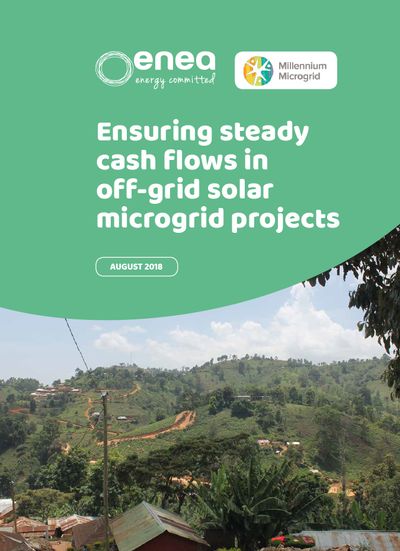Ensuring steady cash flows in off-grid solar microgrid projects

This report presents the main risks of a microgrid project for investors, actions to mitigate them and proposes a pricing model to ensure steady cash-flows. It results from the collaboration between Blunomy (Enea Consulting) and Millennium Microgrid. Millennium Microgrid was one of the winning organisations of Blunomy (Enea Consulting)’s call for projects in 2018.
How can microgrid developers increase the financial attractiveness of projects?
Over 1.1 billion people in the world today do not have access to electricity. Approximately 600 million of these people live in Sub-Saharan Africa. Distributed renewable microgrids are widely recognised for their potential to bring electricity to hundreds of millions of Sub-Saharan Africans. These village-scale assets range in size from a few hundred watts to hundreds of kilowatts, serving dozens to thousands of customers. Through aggregation of electricity demand, they can supply electricity at an affordable rate to both households and businesses.
To enable the rapid and massive development of these solutions, private capital and long-term project financing is a must. For example, a 75 kW microgrid that serves 1,000 customers may require an initial investment of up to one million USD. With 1.8 million households “beyond the reach of a national grid” in areas of medium to high levels of density, Tanzania alone represents a 1.8 billion USD investment opportunity.
However, investors and lenders perceive microgrid projects as risky, due to the high capital intensity and lack of creditworthy long-term power purchase agreements. Due to these risks, lenders and investors require a high cost of financing for microgrid projects. Mitigating these risks will help unlock investment opportunities and reach the UN Sustainable Development Goal 7: “Ensure access to affordable, reliable, sustainable and modern energy for all”.
Three levers exist to mitigate the risks of non-steady cash flows of solar microgrid projects:
- Mastering operational management (revenue collection, maintenance)
- Optimising customer portfolios to reduce demand risks
- Adopting a price structure that makes cash flows more resilient to reduced energy consumption